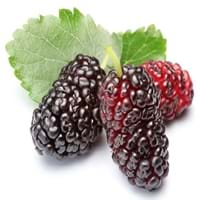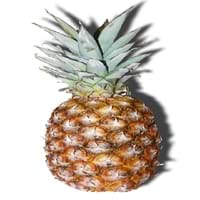Health Benefits
Anti-aging benefits, Boosts immune system, Cancer prevention, Flu treatment, Hair care, Heart care, Improves eye vision, Increases metabolic rate, Kidney stone treatment, Maintains healthy cholesterol level, Skin cleansing, Skin rejuvenation, Treatment of common cold, Treatment of skin Diseases
Asthma treatment, Bronchitis treatment, Cancer prevention, Heart care, Increases metabolic rate
General Benefits
Boosts immune system, Controls blood sugar levels, Flu treatment, Improves eye vision, Maintains healthy cholesterol level, Treatment of common cold
Anti-inflammatory properties, Controls blood pressure, Digestive aid, Eye care, Healing of wounds, Maintains healthy cholesterol level, Strengthens bones, Treatment of sinusitis, Treatment of common cold
Skin Benefits
Anti-aging benefits, Skin cleansing, Treatment of skin diseases
Anti-aging benefits, Brightens and lightens complexion, Skin cleansing, Treatment of acne, Treatment of dark spots
Hair Benefits
Protects hair, Regulates hair growth
Prevents hair loss
Allergy Symptoms
Breathing difficulty, Itching, Nasal congestion, Redness of eyes, Runny nose, Sneezing
Abdominal pains, Itching in tongue and other parts of mouth, Sneezing, Swelling, Tingling sensation in wrist and face, Vomiting, Wheezing
Side Effects
Decrease in blood sugar levels, Allergic reaction
Causes swollen mouth, Allergic reaction, Diarrhoea, Nausea, Skin rash, Vomiting
Best Time to Eat
Best if taken as a breakfast (or empty stomach), As a snack in the late afternoon, Don't consume at night and before bed, Eat the fresh ones, avoid mixing with any other foods, don't eat after meal., Morning time (before lunch)
Best if taken as a breakfast (or empty stomach), As a snack in the late afternoon, Eat the fresh ones, avoid mixing with any other foods, don't eat after meal., Morning time (before lunch)
Vitamin B5 (Pantothenic Acid)
Not Available
Vitamin C (Ascorbic Acid)
Vitamin K (Phyllochinone)
Phytosterol
Not Available
Calories in Fresh Fruit with Peel
Not Available
Calories in Fresh Fruit without Peel
Not Available
Calories in Canned Form
Not Available
Type
Berry
Berry, Tropical
Season
Spring, Summer
Autumn
Varieties
Charparral, Pendula, Teas, Bellaire and Lingan
Smooth Cayenne, Abacaxi, Red Spanish and Queen
Color
Pink, Purple, White
Yellow
Taste
Tart
Strong, Sweet, Tart
Origin
China
Central America, South America
Grows on
Trees
Not Available
Soil Type
Clay, Loam
Clay, Sandy loam, Well-drained
Climatic Conditions
Sunny
Hot, Sunny
Facts about
- It can take up to 10 years for a tree to produce mulberry fruit.
- Mulberry leaves are fed to silkworms to enhance silk production.
- In Germany, they say that devil uses root of mulberry tree to polish his boots.
- A single pineapple takes 3 years to reach maturation.
- Pineapple is not an apple, but is actually a berry.
- The name is with reference to its resemblance to pine cones.
- Pineapple is sweeter if scales are more.
Top Producer
China
Costa Rica
Other Countries
Colombia, Egypt, India, Indonesia, Kenya, Mexico, Pakistan, Peru, Russia, United States of America
Brazil, India, Philippines, Thailand
Top Importer
Not Available
United States of America
Top Exporter
China
Costa Rica
Botanical Name
Morus Alba
Ananas comosus
Synonym
Morus atropurpurea or Morus multicaulis
Ananas sativus
Subkingdom
Tracheobionta
Tracheobionta
Division
Magnoliophyta
Magnoliophyta
Class
Magnoliopsida
Liliopsida
Subclass
Alismidae
Commelinidae
Family
Moraceae
Bromeliaceae
Species
M. alba
A. comosus
Generic Group
Mulberry
Pineapple
Difference Between Mulberry and Pineapple
We might think that Mulberry and Pineapple are similar with respect to nutritional value and health benefits. But the nutrient content of both fruits is different. Mulberry and Pineapple Facts such as their taste, shape, color, and size are also distinct. The difference between Mulberry and Pineapple is explained here.
The amount of calories in 100 gm of fresh Mulberry and Pineapple with peel is 43.00 kcal and Not Available and the amount of calories without peel is Not Available and 50.00 kcal respectively. Thus, Mulberry and Pineapple belong to Low Calorie Fruits and Low Calorie Fruits category.These fruits might or might not differ with respect to their scientific classification. The order of Mulberry and Pineapple is Rosales and Poales respectively. Mulberry belongs to Moraceae family and Pineapple belongs to Bromeliaceae family. Mulberry belongs to Morus genus of M. alba species and Pineapple belongs to Ananas genus of A. comosus species. Beings plants, both fruits belong to Plantae Kingdom.









